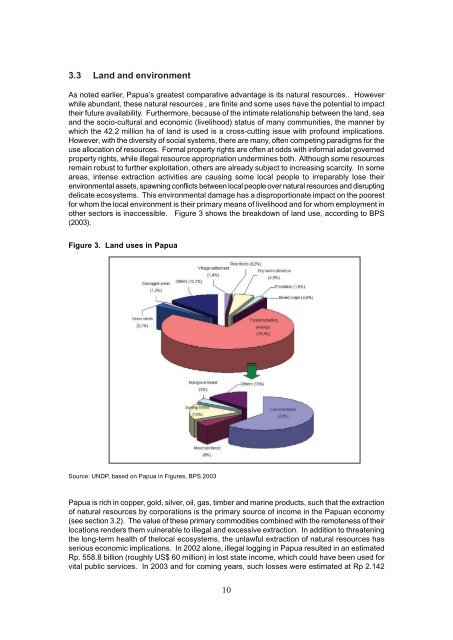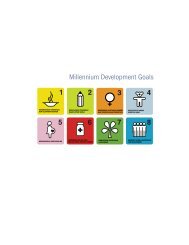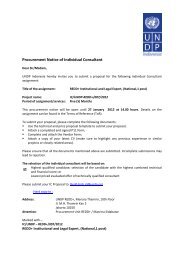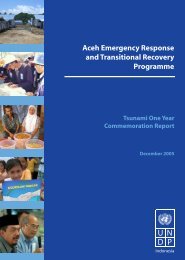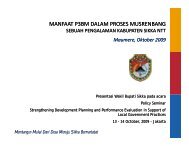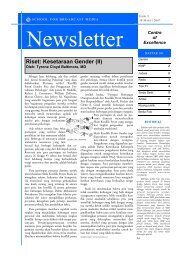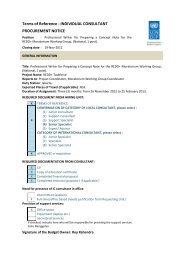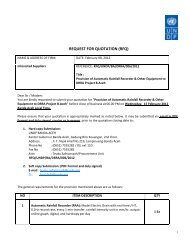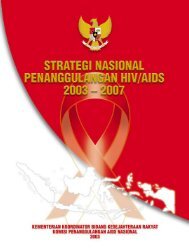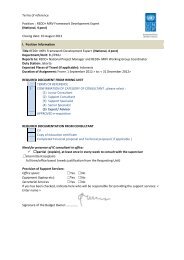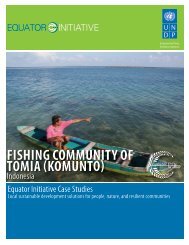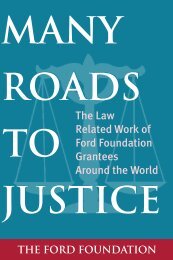Papua Needs Assessment - UNDP
Papua Needs Assessment - UNDP
Papua Needs Assessment - UNDP
You also want an ePaper? Increase the reach of your titles
YUMPU automatically turns print PDFs into web optimized ePapers that Google loves.
3.3 Land and environment<br />
As noted earlier, <strong>Papua</strong>’s greatest comparative advantage is its natural resources.. However<br />
while abundant, these natural resources , are finite and some uses have the potential to impact<br />
their future availability. Furthermore, because of the intimate relationship between the land, sea<br />
and the socio-cultural and economic (livelihood) status of many communities, the manner by<br />
which the 42.2 million ha of land is used is a cross-cutting issue with profound implications.<br />
However, with the diversity of social systems, there are many, often competing paradigms for the<br />
use allocation of resources. Formal property rights are often at odds with informal adat governed<br />
property rights, while illegal resource appropriation undermines both. Although some resources<br />
remain robust to further exploitation, others are already subject to increasing scarcity. In some<br />
areas, intense extraction activities are causing some local people to irreparably lose their<br />
environmental assets, spawning conflicts between local people over natural resources and disrupting<br />
delicate ecosystems. This environmental damage has a disproportionate impact on the poorest<br />
for whom the local environment is their primary means of livelihood and for whom employment in<br />
other sectors is inaccessible. Figure 3 shows the breakdown of land use, according to BPS<br />
(2003).<br />
Figure 3. Land uses in <strong>Papua</strong><br />
Source: <strong>UNDP</strong>, based on <strong>Papua</strong> in Figures, BPS 2003<br />
<strong>Papua</strong> is rich in copper, gold, silver, oil, gas, timber and marine products, such that the extraction<br />
of natural resources by corporations is the primary source of income in the <strong>Papua</strong>n economy<br />
(see section 3.2). The value of these primary commodities combined with the remoteness of their<br />
locations renders them vulnerable to illegal and excessive extraction. In addition to threatening<br />
the long-term health of thelocal ecosystems, the unlawful extraction of natural resources has<br />
serious economic implications. In 2002 alone, illegal logging in <strong>Papua</strong> resulted in an estimated<br />
Rp. 558.8 billion (roughly US$ 60 million) in lost state income, which could have been used for<br />
vital public services. In 2003 and for coming years, such losses were estimated at Rp 2.142<br />
10


